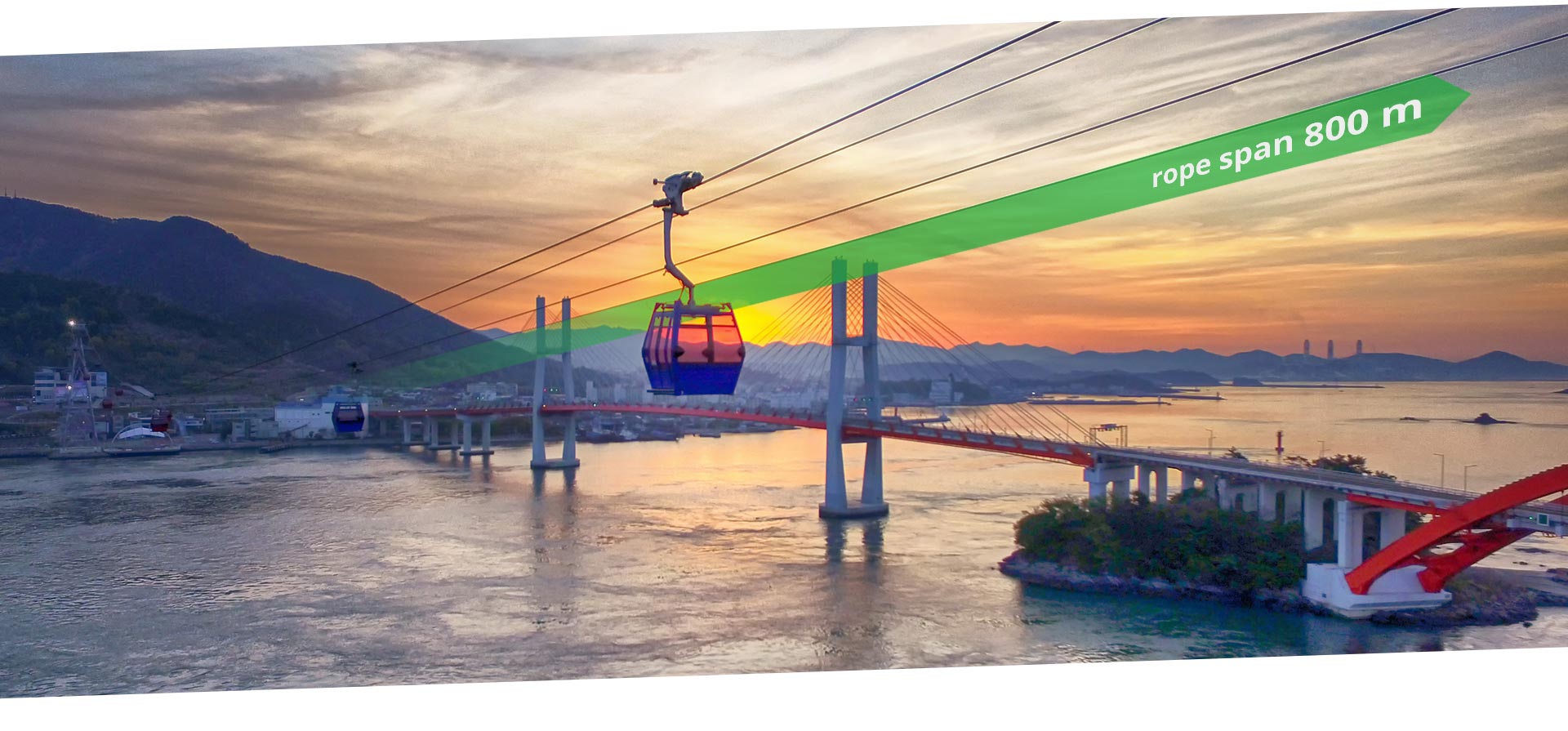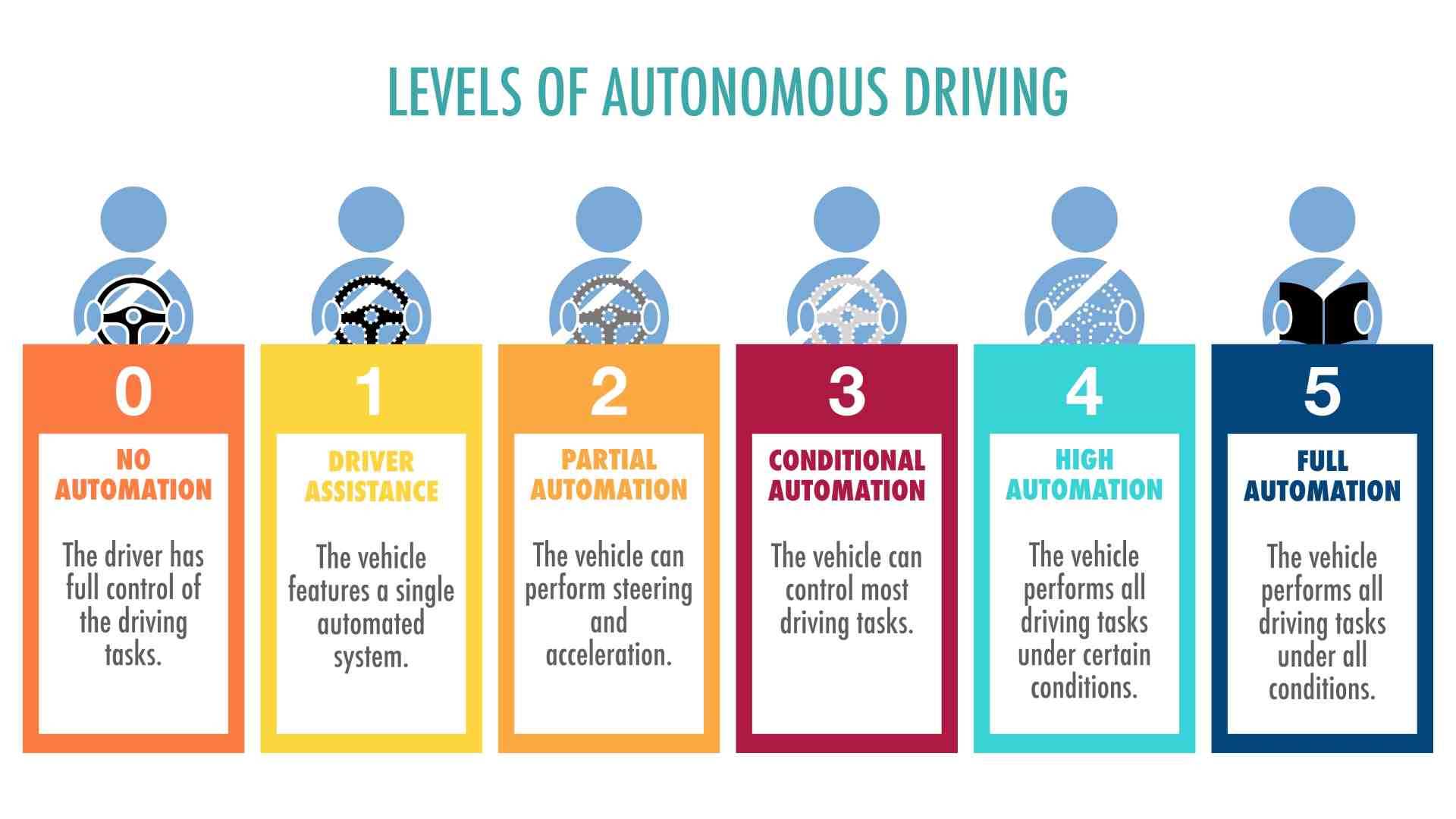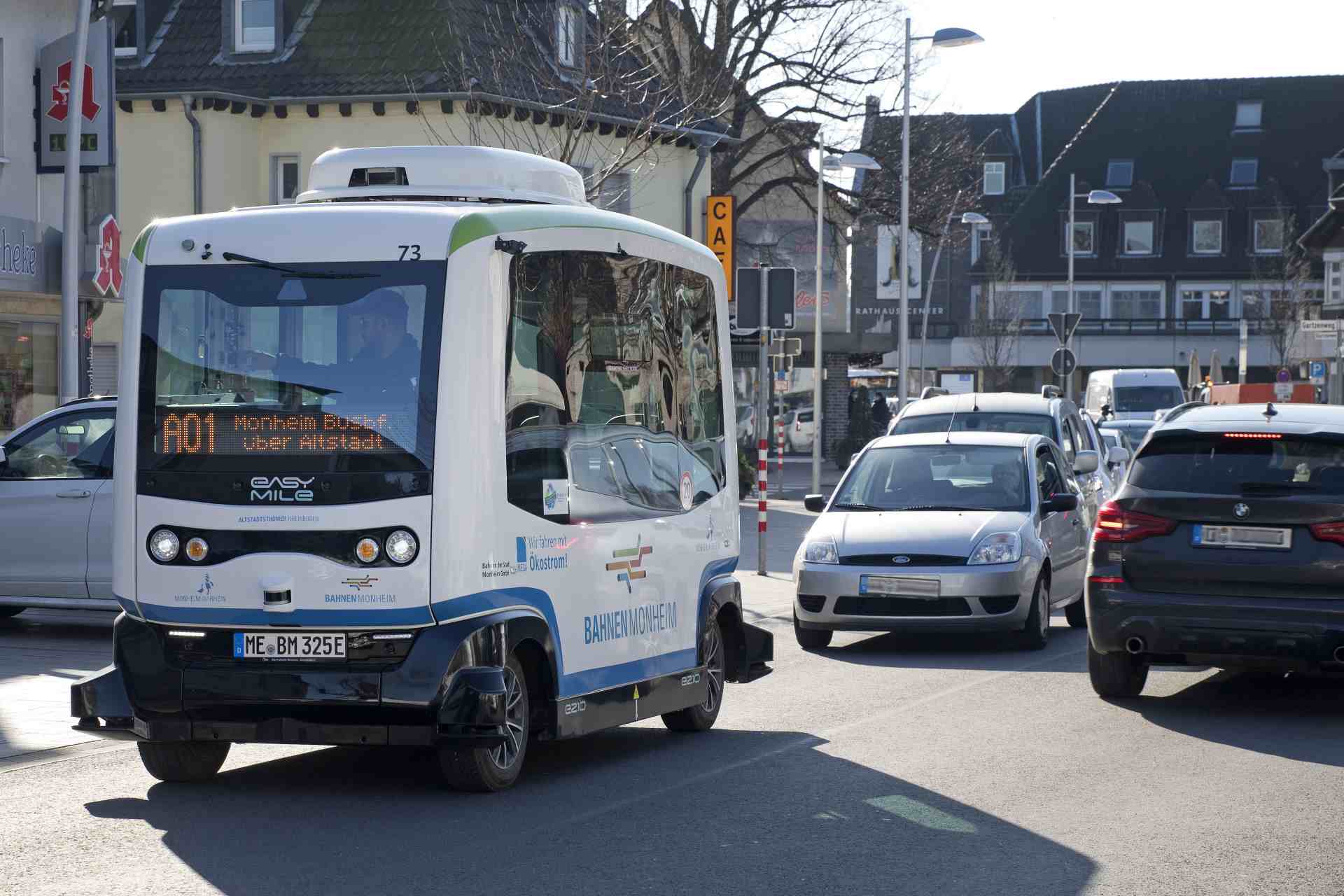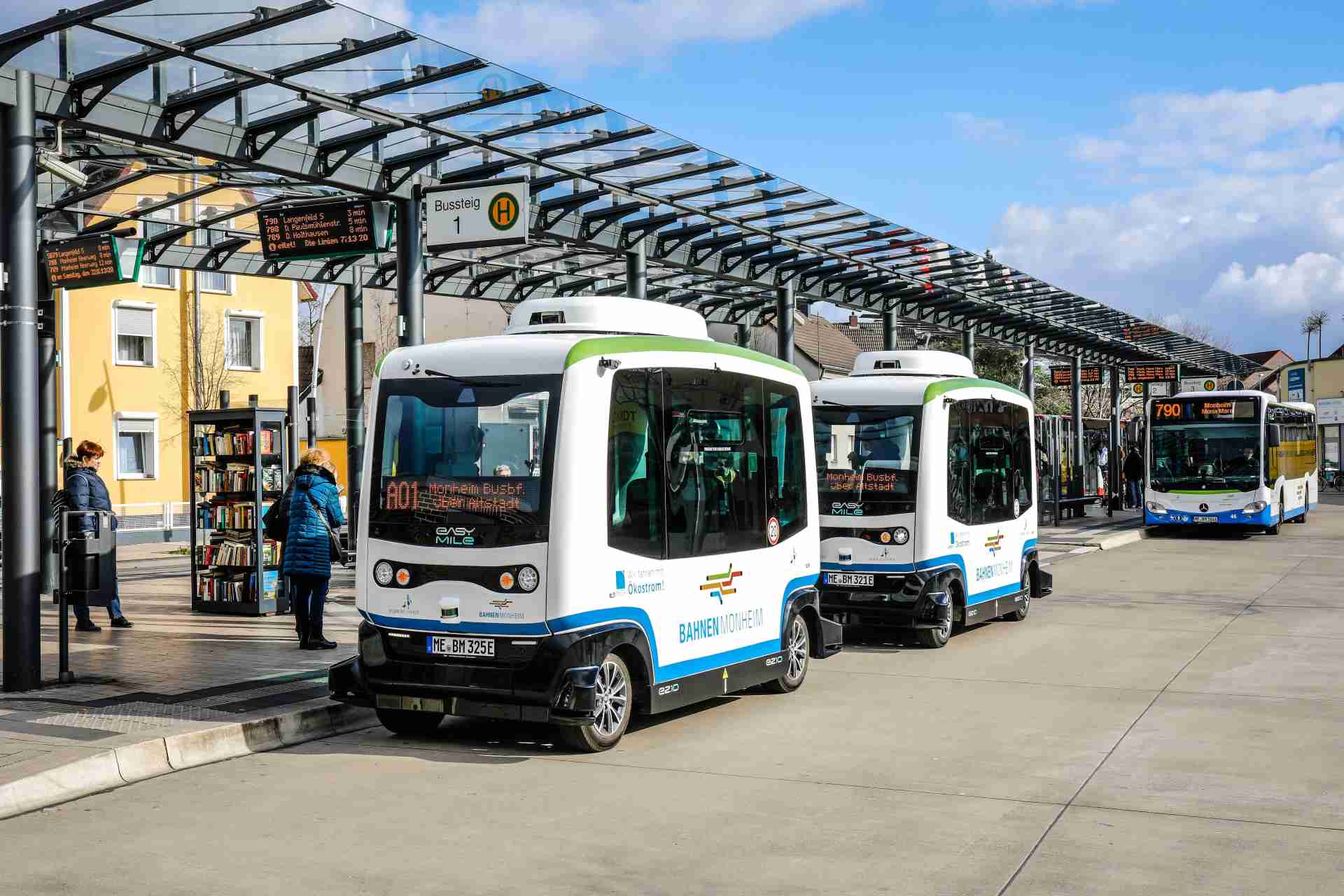
Autonomous Vehicle (AV) | Automated Guided Vehicle (AGV)
State-of-the-art technology should make it possible to operate vehicles fully autonomously at Level 5. This means that passengers would be released from their supervisory responsibility and the installed equipment would be able to manage all traffic situations.
Many manufacturers are optimistic and promote their autonomous vehicles, which are equipped with artificial intelligence, to the attention of the press. Modern autonomous vehicle technologies operate based on several installed cameras in combination with a conventional radar and laser radar (lidar) system. The vehicles also make use of a high-precision GPS unit with an extensive set of maps, some of which are created by the vehicle’s own attached cameras.
Cost-effective operation in public transport only possible on a Level 5 basis
 Initial pilot projects of autonomous vehicles in regular service on a Level 4 basis (fully automated operation with on-board attendants for emergency cases) have relativized optimistic estimates that autonomous transport will soon replace conventional individual transport. Autonomous vehicles currently operating in urban public transport on a Level 4 basis are without exception for research and testing purposes. However, autonomous transport at ground level in public transport will become economically feasible only if fully unmanned operation on a Level 5 basis (without on-board attendants) will be possible. In addition, the autonomous vehicles must be equipped with conventional bus capacities (e.g. midi-bus, standard bus, etc.) to handle more passenger volumes. Indeed, how can street-level based public transport with autonomous small vehicles for up to 10 passengers work without an expansion of the existing street infrastructure? However, this would be necessary to manage the additional traffic generated by smaller vehicle sizes without a complete collapse of city center traffic being preprogrammed. But space for infrastructure expansion is extremely rare.
Initial pilot projects of autonomous vehicles in regular service on a Level 4 basis (fully automated operation with on-board attendants for emergency cases) have relativized optimistic estimates that autonomous transport will soon replace conventional individual transport. Autonomous vehicles currently operating in urban public transport on a Level 4 basis are without exception for research and testing purposes. However, autonomous transport at ground level in public transport will become economically feasible only if fully unmanned operation on a Level 5 basis (without on-board attendants) will be possible. In addition, the autonomous vehicles must be equipped with conventional bus capacities (e.g. midi-bus, standard bus, etc.) to handle more passenger volumes. Indeed, how can street-level based public transport with autonomous small vehicles for up to 10 passengers work without an expansion of the existing street infrastructure? However, this would be necessary to manage the additional traffic generated by smaller vehicle sizes without a complete collapse of city center traffic being preprogrammed. But space for infrastructure expansion is extremely rare.
Artificial intelligence and human intuition are not compatible
 In general, robot-controlled vehicles lack a crucial component compared to humans, namely intuition. Here is an example: A human decides within a fraction of a second, taking into account cognitive, but also instinctive, unconscious criteria, which is necessary, for example, when a sudden obstacle appears, caused by an accident in front of one. Do you swerve to the right into a ditch and risk considerable damage to yourself? Or do you swerve to the left and risk a crash with oncoming traffic? Or is the available braking distance still enough to come to a stop in time? Due to many influences on different levels, humans often successfully decide on the extent of the least evil, which an artificial being will never manage to do to this extent. In this case, artificial intelligence meets human thinking, or rationality meets intuition. Whether these two species will ever get along and be compatible cannot be guessed. Thus, no one can predict whether mixed operation with manually driven vehicles in dense city center traffic will ever be feasible and find appropriate acceptance.
In general, robot-controlled vehicles lack a crucial component compared to humans, namely intuition. Here is an example: A human decides within a fraction of a second, taking into account cognitive, but also instinctive, unconscious criteria, which is necessary, for example, when a sudden obstacle appears, caused by an accident in front of one. Do you swerve to the right into a ditch and risk considerable damage to yourself? Or do you swerve to the left and risk a crash with oncoming traffic? Or is the available braking distance still enough to come to a stop in time? Due to many influences on different levels, humans often successfully decide on the extent of the least evil, which an artificial being will never manage to do to this extent. In this case, artificial intelligence meets human thinking, or rationality meets intuition. Whether these two species will ever get along and be compatible cannot be guessed. Thus, no one can predict whether mixed operation with manually driven vehicles in dense city center traffic will ever be feasible and find appropriate acceptance.
Important safety issues and legal aspects still unresolved
Many central safety issues (e.g. sudden obstacles caused by pedestrians, accidents, solid objects, etc.), operating scenarios (night operation, snowfall, overtaking, etc.), legal aspects (unified codes and standards for Europe and worldwide, requirements for road traffic regulations), liability and insurance issues are all still unsolved to a significant extent.
Technological progress faster than development of the legal framework
 Technological development precedes the legal framework. However, there are also countries, such as Germany, where legislators have already established legal frameworks at an early stage that enable autonomous transport in a monitored and safe environment. Thus, autonomous vehicles on a Level 4 basis are generally permitted on public roads – but only in defined areas (e.g., shuttle buses with attendants on defined routes from A to B).
Technological development precedes the legal framework. However, there are also countries, such as Germany, where legislators have already established legal frameworks at an early stage that enable autonomous transport in a monitored and safe environment. Thus, autonomous vehicles on a Level 4 basis are generally permitted on public roads – but only in defined areas (e.g., shuttle buses with attendants on defined routes from A to B).
Humans have the ultimate responsibility
Legal experts agree that machines or artificial beings can never be legally liable for accidents. Considering that autonomous vehicles will be operated at Level 4 or Level 5 in the future, this statement has enormous conflict potential and may represent a decisive bottleneck for autonomous driving. This is because the search for possible sources of error in the event of an accident becomes extremely complex. It is doubtful whether technology errors, communication errors, maintenance errors, map errors, network errors, infrastructure errors or operator errors can be located without doubt in the event of an accident to determine who is ultimately liable.
Rural areas are the right playground for autonomous vehicles
Public transport operation of autonomous shuttle buses in mixed traffic on a Level 5 basis in rural areas and low-traffic roads is definitely imaginable in the future (2030+), but Level 5 operation of autonomous vehicles in inner-city mixed traffic is difficult to implement under real conditions due to the existing traffic complexity and human congestion and the resulting danger potential. Consequently, autonomous transport at level 5 can realistically only take place in zoned urban areas where only autonomous vehicles are in operation.
On-demand shuttle buses are suitable solutions for 24-hours operation
Especially in small towns, municipalities, communities and rural regions, public transport must be more flexible in the future. On-demand shuttle buses with flexible routes that operate around the clock will play an important role. In addition, on-demand buses are a perfect application area for the digitalization currently taking place in public transport. When a bus is needed, it should arrive within a defined time period and travel to the desired destination within an acceptable travel time. The on-demand bus picks up passengers at defined stops, but there are no fixed network schedules anymore. In the background, intelligent software always calculates the current and fastest route. This does not necessarily mean that more staff is needed for manned operation, as the software can optimize staffing requirements.